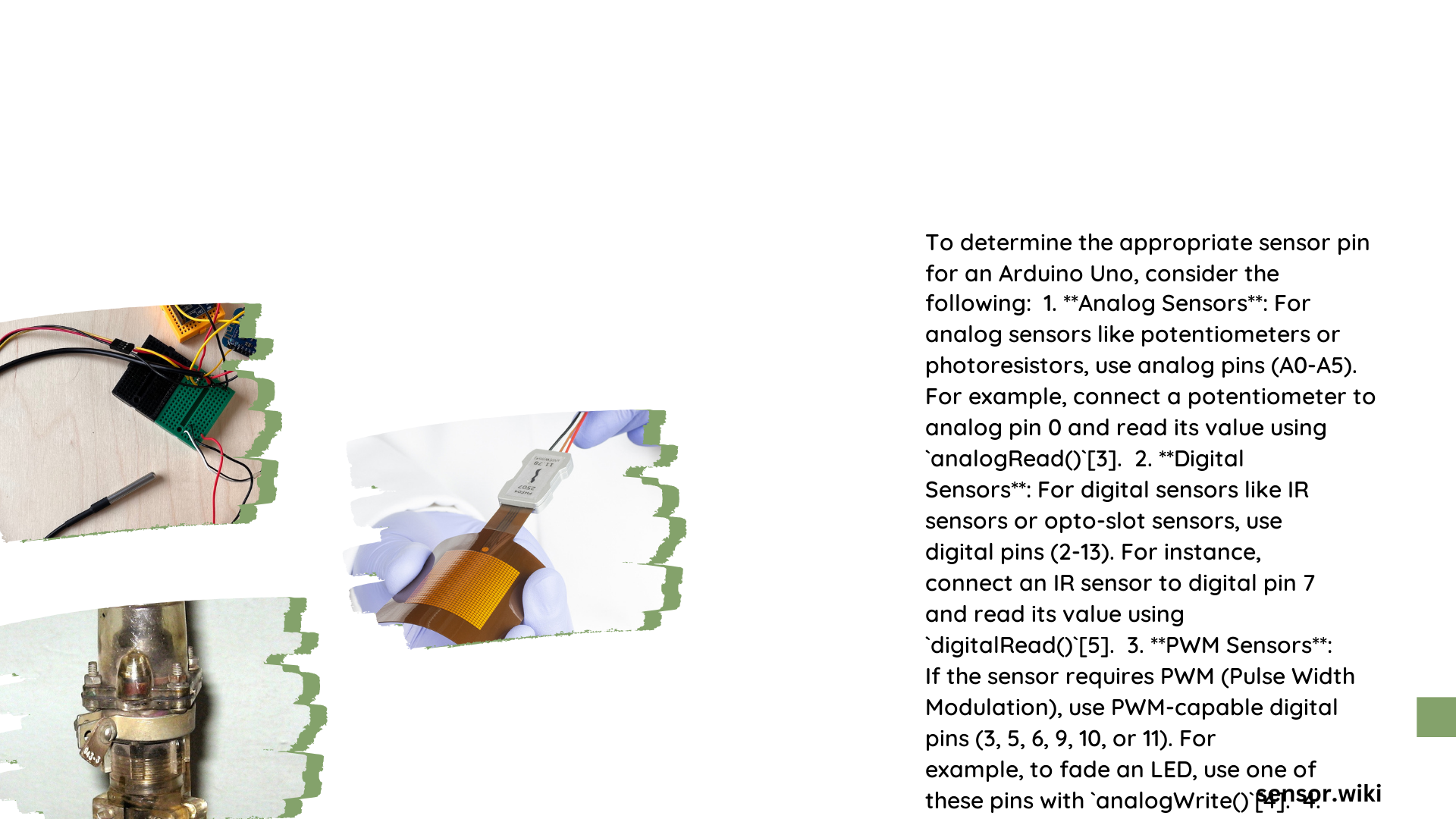Arduino Uno sensor pins represent a critical interface for connecting various sensors and electronic components, enabling makers and engineers to transform raw data into meaningful insights. These versatile pins provide multiple connection options across analog and digital domains, supporting a wide range of sensing technologies from temperature and humidity to motion and light detection. Understanding their precise functionality, voltage characteristics, and connection protocols is essential for successful project implementation.
What Are Sensor Pins on Arduino Uno?
Sensor pins on Arduino Uno are specialized electrical connection points that allow interaction between the microcontroller and external sensing devices. These pins can be categorized into two primary types:
Analog Sensor Pins
- Total Pins: 6 (A0 to A5)
- Voltage Range: 0-5 volts
- Resolution: 10-bit (1024 distinct levels)
- Primary Use: Measuring continuous voltage signals
Digital Sensor Pins
- Total Pins: 14 (0 to 13)
- Voltage Levels: HIGH (5V) or LOW (0V)
- Current Capacity: 40 mA per pin
- Special Features: Interrupt capabilities on pins 2 and 3
How Do Analog Sensor Pins Work?

Analog sensor pins utilize an analog-to-digital converter (ADC) to transform continuous voltage signals into discrete numerical values. The conversion process involves:
- Receiving analog voltage input
- Quantizing the voltage into 1024 levels
- Generating a corresponding digital value between 0-1023
Analog Pin Connection Example
| Sensor Type | Pin | Voltage Range | Typical Application |
|---|---|---|---|
| Temperature | A0 | 0-5V | Measuring ambient temperature |
| Light Sensor | A1 | 0-5V | Detecting light intensity |
| Potentiometer | A2 | 0-5V | Variable resistance measurement |
What Are the Voltage Considerations for Sensor Pins?
Proper voltage management is crucial for reliable sensor performance:
- Analog Pins: Must receive signals between 0-5 volts
- Digital Pins: Operate at strict 0V or 5V levels
- Recommended Practices:
- Use voltage dividers for high-voltage sensors
- Implement pull-up/pull-down resistors
- Ensure consistent ground connections
How to Minimize Sensor Pin Interference?
Reducing electrical noise and signal degradation involves:
- Shielding sensor connection wires
- Separating power and signal lines
- Using decoupling capacitors
- Implementing proper grounding techniques
What Sensors Can Be Connected?
Arduino Uno supports numerous sensor types:
- Temperature sensors
- Humidity sensors
- Accelerometers
- Gyroscopes
- Proximity sensors
- Light sensors
- Sound sensors
Best Practices for Sensor Pin Connection
- Verify voltage compatibility
- Check current requirements
- Use appropriate resistors
- Implement software debouncing
- Consider electrical noise mitigation
Advanced Sensor Pin Techniques
- Multiplexing for expanding pin capabilities
- Using external ADC for more resolution
- Implementing interrupt-driven sensing
- Applying filtering algorithms
Troubleshooting Sensor Pin Issues
- Check physical connections
- Verify voltage levels
- Test individual sensor functionality
- Examine ground connections
- Update Arduino libraries
Conclusion
Mastering sensor pin Arduino Uno connections requires understanding electrical principles, sensor characteristics, and microcontroller capabilities. By following systematic approaches and best practices, developers can create robust and reliable sensing systems.
Reference:
– Arduino Official Documentation
– Arduino Sensor Tutorials
– Adafruit Learning Resources
